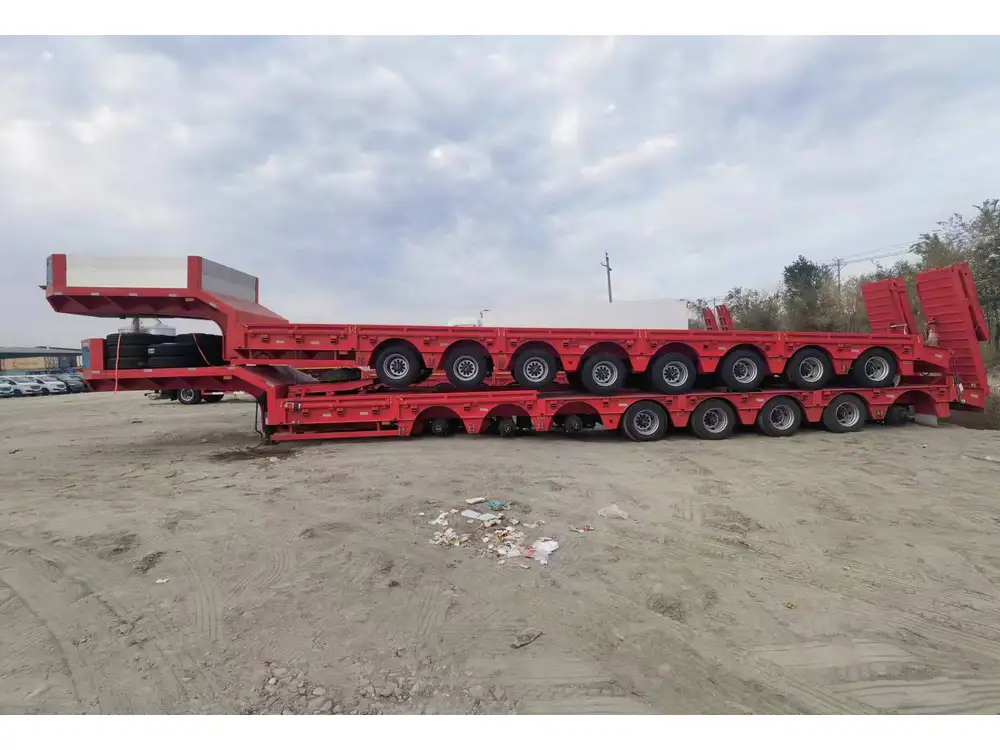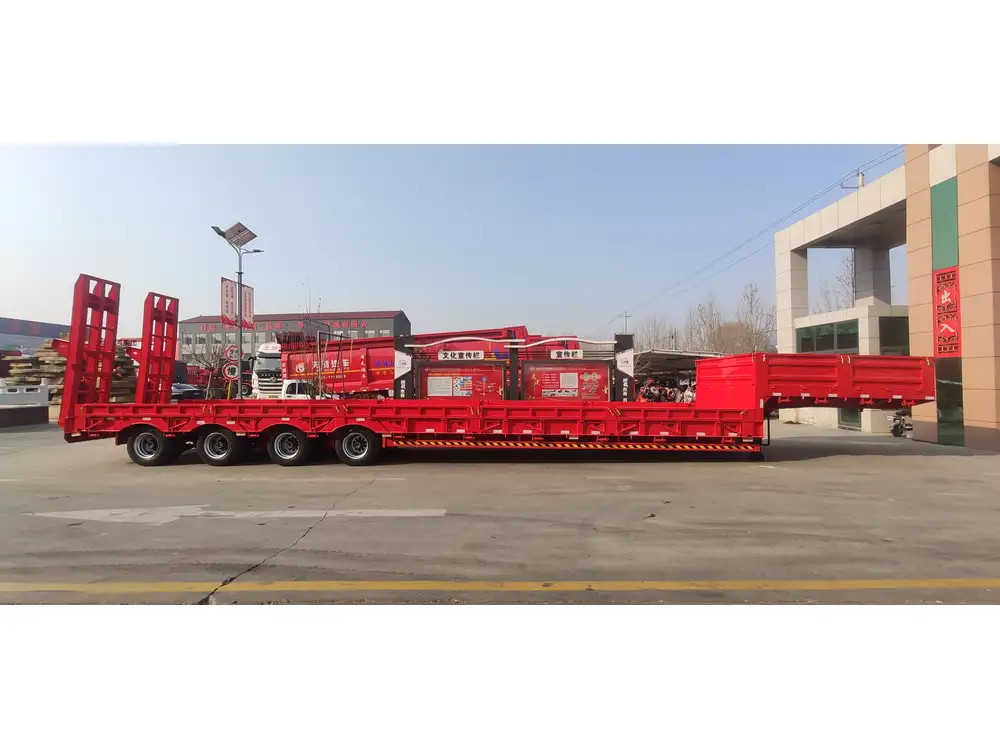Dump trailers are indispensable tools in construction, landscaping, and various hauling tasks. Understanding their capabilities, particularly how many tons they can effectively haul, is essential for maximizing efficiency and ensuring safety on job sites. With this comprehensive guide, we will delve into various factors impacting the hauling capacity of dump trailers, provide insightful comparisons, and equip you with the knowledge necessary for making informed decisions.
1. Dump Trailer Basics: Construction and Types
Before we dive into hauling capacities, it’s crucial to understand the basic anatomy and classification of dump trailers.
Table 1: Types of Dump Trailers
| Type of Dump Trailer | Description | Typical Capacity (Tons) | Ideal Uses |
|---|---|---|---|
| Standard Dump Trailers | Commonly used for various materials | 10-14 tons | Construction, debris hauling |
| Low-Profile Dump Trailers | Lowered height for easy loading | 6-12 tons | Landscaping, small equipment |
| Side Dump Trailers | Dumps materials from the side | 12-20 tons | Large-scale construction |
| End Dump Trailers | Dumps from the back | 15-30 tons | Heavy excavation, aggregates |
| Tri-Axle Dump Trailers | Three axles for added support | 20-25 tons | Commercial hauling, heavy loads |
These classifications highlight that the capacity of a dump trailer can substantially vary based on its type, design, and intended applications.

2. Key Factors Affecting Hauling Capacity
Understanding how many tons a dump trailer can haul requires a look into several critical factors:
2.1. Trailer Construction and Material
Dump trailers are typically constructed using steel or aluminum. The choice of material impacts not only the weight of the trailer but its durability and load capacity. Steel trailers, while heavier, generally have higher load capabilities compared to their aluminum counterparts, which are lighter but might require more frequent replacements.
2.2. Axle Configuration
The axle configuration plays a seminal role in load distribution. Most dump trailers come with either single, tandem, or tri-axle setups. A tri-axle configuration will support a heavier load due to better weight distribution and increased stability.

2.3. Tire Specifications
Heavy-duty tires designed for high-load capacities are crucial for dump trailers. The specifications of the tires can dictate how much weight the trailer can haul without compromising safety.
2.4. Frame Design
The structural integrity of the trailer’s frame also affects its hauling capacity. A well-engineered frame with the right supports can withstand greater loads without bending or breaking.
2.5. Legal Weight Limits
Regulatory bodies impose weight limits on trailers for safety reasons. Depending on state and federal regulations, the weight limitations can vary. Always verify the legal weight restrictions in your region to avoid fines or accidents.

3. Calculating Hauling Capacity
To accurately determine how many tons your dump trailer can haul, follow these calculation guidelines:
Step 1: Know the Trailer’s GVWR
- Gross Vehicle Weight Rating (GVWR) is the maximum weight a trailer can safely handle, including its own weight plus the load.
Step 2: Subtract the Trailer Weight
For example, if your dump trailer has a GVWR of 14,000 pounds and its own weight is 4,000 pounds:
[ \text{Payload Capacity} = \text{GVWR} – \text{Trailer Weight} ] [ = 14,000\, \text{lbs} – 4,000\, \text{lbs} = 10,000\, \text{lbs} ]
Step 3: Convert to Tons
To convert pounds to tons, divide by 2,000:
[ \text{Payload Capacity in Tons} = 10,000\, \text{lbs} \div 2,000 = 5\, \text{tons} ]4. Common Applications of Dump Trailers
Dump trailers serve diverse needs across multiple industries. Here are a few applications:
4.1. Construction Sites
Construction companies frequently utilize dump trailers to transport materials such as gravel, sand, crushed stone, and dirt. For heavy-duty tasks, tri-axle dump trailers are preferred due to their superior payload capabilities.

4.2. Landscaping
In landscaping, low-profile dump trailers are commonly used to transport decorative rocks, soil, and mulch. Their design allows easy loading from low-clearance locations.
4.3. Waste and Debris Removal
Dump trailers are indispensable for waste management, allowing contractors to quickly haul away debris from renovation or demolition sites, ensuring compliance with local regulations on waste disposal.
4.4. Agricultural Uses
Farmers use dump trailers to transport crops, fertilizers, and equipment. The versatility of these trailers enhances farm efficiency greatly.

4.5. Bulk Material Transport
Industries requiring bulk material transport (like gravel or asphalt) benefit greatly from the significant load capacities of both end dump and side dump trailers.
5. Comparison: Traditional Dump Trailers vs. Dump Trucks
Table 2: Dump Trailers vs. Dump Trucks
| Feature | Dump Trailers | Dump Trucks |
|---|---|---|
| Load Capacity | 6-30 tons (varies by model) | 10-20 tons (average) |
| Maneuverability | Higher due to trailer design | Limited due to size |
| Cost | Generally lower upfront cost | Higher initial investment |
| Versatility | More versatile with trailer options | Less versatile but more powerful |
| Maintenance | Easier to maintain | Maintenance can be complex |
The choice between a dump trailer and a dump truck often comes down to budget, intended use, and maneuverability in tight spaces.

6. Enhancing Hauling Efficiency
To better utilize your dump trailer’s hauling capabilities, consider implementing the following strategies:
6.1. Smart Loading Techniques
Distributing weight evenly across the trailer ensures better handling and maximizes the load capacity. Overloading one side can lead to instability while driving.
6.2. Proper Maintenance
Regularly inspect tires, brakes, and structural components of the trailer. A well-maintained trailer will function better, minimizing risks during hauling.

6.3. Weight Management
Stay informed about load weights. Using scales before departure ensures you remain within safe hauling limits, which is crucial for both legality and safety.
7. Conclusion: Maximizing Your Dump Trailer’s Potential
In conclusion, knowing how many tons a dump trailer can haul involves understanding several interconnected factors, from trailer design and axle configuration to legal weight limits and effective loading practices. As a manufacturer of semi-trailers, our commitment to quality ensures that your investment in a dump trailer is well-rewarded.
When choosing a dump trailer, consider your specific needs—whether your priority lies in capacity, maneuverability, or versatility. By leveraging the insights provided in this article, you will position yourself to make informed choices that optimize your trailers’ performance and effectiveness in diverse applications. Connect with our team today to explore tailored solutions that best fit your hauling requirements.



